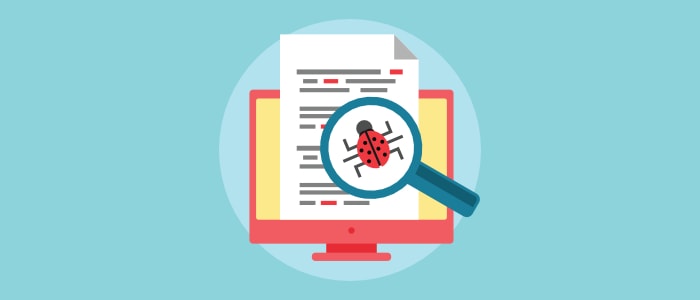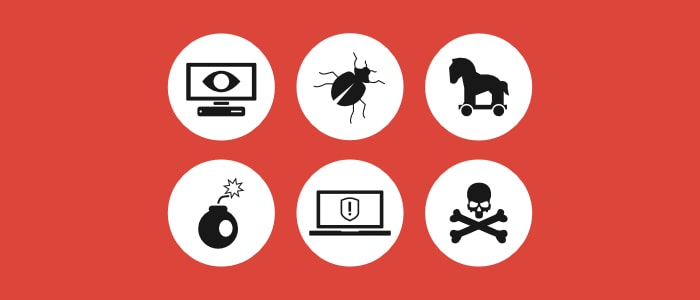What Is Malware and How to Prevent It
Malware is a term that refers to any malicious software, including viruses and worms. They exist to do damage or harm to computer systems, networks, and users. Malware can be found online on websites, emails, instant messages, and removable drives such as USB sticks.
There are many different types of malware with various effects: some will delete your files while others may steal data from you!
In this post, we will discuss the various ways in which malware affects people’s lives by doing things like taking over their computer screens or stealing passwords. We’ll also give tips on how you can protect yourself against these malicious programs – especially if you’re not tech-savvy!
What Is Malware?
Malware is a general term for malicious software programs that are designed to do harm. The word malware comes from an amalgamation of the words “malicious” and “software.” This can be anything from annoying pop-ups ads you see on a website to a virus that destroys all your files.
Malware is most often installed on computers through the use of deceptive tactics such as spam email campaigns and infected webpages.
Other common ways you might infect yourself include downloading pirated software or sharing data from an unsecured Wi-Fi hotspot. Once the malware has been installed on your computer, it can do several things, such as track everything you do online and sell that information to third parties.
Malware is often used for financial gain by cybercriminals who want access to your sensitive data or banking information. Hackers also use malware to get into secure networks, which they then exploit for their own purposes.
Types of Malware
Many different types of malware exist, and each type has its own way of infecting you. Here is a list of the most common types:
Ransomware
This type locks your computer or files and then charges you for access. Sometimes it will encrypt all your data so that if something goes wrong, you might lose all your information.
Botnet
This is when a hacker installs malware on many computers and uses them to overload websites, spam email accounts, or launch DDoS attacks without the owner’s knowledge. In this way, they can bring down sites that are not protected by anti-DDoS software, for example. Hackers will then demand money to stop the attack.
Spyware
This type of malware is designed to spy on users and track their browsing habits to send them targeted advertisements or steal data like passwords, bank information, and credit card numbers.
Worms
A worm doesn’t need the user’s help in spreading itself; they do it all by itself and can often lay dormant for a long time before showing itself.
Browser Hijackers
This type of malware comes bundled with other programs, and once installed, it will change your home page or search engine to something else without you knowing. The goal is usually to make money from online advertising by redirecting users through pay-per-click schemes.
Virus Hoax
Hoax malware is usually disguised as antivirus programs or other software that promises to protect your device. You might be prompted to download this type of program through spam email or pop-up ads on infected websites. Once installed, the hoax will instead do more harm than good by infecting you with additional viruses or malware.
Adware
Adware is a type of malware that will hijack your web browser and bombard you with ads. Many times these ads look just like the ones on legitimate websites, but they are designed to trick you into clicking them so that their creators can make money from online advertising.
Drive-by Downloads
This type of malware can infect your computer when you simply browse a webpage without having to download anything. Its name comes from the fact that it “drives by” while you are browsing and installs itself to do harm without any further interaction on your part.
Trojan
This type of malware is often disguised as a legitimate program, and once installed, it will allow attackers to take control of your computer while hiding its presence on your device. This way, the attacker can use your machine for their own purposes, such as sending spam emails or stealing sensitive data like bank account numbers or passwords.
Fileless Malware
Fileless malware is another type of virus that infects your computer without installing itself on the hard drive. It works by exploiting security holes in applications or programs and then delivering its code into a system’s memory (RAM) instead of writing to disk, which makes this type difficult to detect and remove.
Rootkits
This type of malware is a very powerful tool in the hands of hackers because it will allow them to take full control over your computer system while hiding its presence from you. A rootkit can be used for all sorts of purposes, such as spying on users, stealing data and passwords.
Keyloggers
This type of malware is used to track all your input to steal passwords and other private data such as account numbers. When someone has a keylogger installed on their computer, they can easily see everything you do while using the device, including online banking credentials, emails sent and received, and instant messaging conversations (including Facebook chat).
How to Prevent Malware
Install Antivirus
One of the best ways to prevent malware from infecting your device is by installing antivirus software. These programs can be installed on both Windows and Mac devices, so you’ll have protection no matter what type of machine you might use for browsing online.
Download Files From Reliable Sites
You should also be careful about the sites you visit and the files you download. This means that it’s a good idea to do your research before downloading anything on your computer, as some sites might try to trick users into downloading malware by disguising it as something else, such as freeware or otherwise enticing downloads.
Don’t Use Pirated Software
You should also avoid using pirated software because it can be a major source of malware. Sometimes, these programs might come bundled with trojans and other types of viruses that will infect your device when you install them on your computer.
Never Click Suspicious Links or Pop-up Ads
Another important thing you can do to protect yourself is not clicking on suspicious links or ads. Hackers often use pop-up windows and other deceptive methods of tricking users into clicking on them, so never click anything that looks out of the ordinary or otherwise fishy.
Use Separate Computer for Sensitive Information
You might want to consider using a separate computer for activities that require sensitive information, like online banking. If your main computer becomes infected with malware or otherwise compromised in some other way, the damage will be limited and won’t impact on all your accounts and saved passwords.
Use Strong Passwords
You should never reuse the same password for different accounts because this will make it much easier for hackers to gain access to your personal information. For example, if they manage to steal your Facebook credentials, they might have instant access to all of your other online accounts without having to bother with any additional passwords or authorizations.
Use a Password Manager
One of the best ways to create strong and unique passwords for each one of your accounts is by using a password manager. Password managers like Bitwarden make it very easy and convenient for you to generate long strings of random characters as new passwords whenever you sign up for an account somewhere on the web.
Use VPN
To protect your privacy and ensure that no one is spying on you, it’s a good idea to use a virtual private network (VPN) service. These services encrypt all of the traffic between your device and the servers where these programs run from, so that hackers won’t be able to steal any passwords or other sensitive data as they travel across public Wi-Fi networks.
Avoid Public W-Fi Networks
Since public Wi-Fi networks are especially vulnerable to hacking and other types of surveillance, you should avoid using them for activities that require sensitive information like online banking or any type of browsing that involves entering passwords into your device.
Don’t Open Emails From Unknown Senders
Spam emails are also one of the most common sources for phishing attacks, so you should never open an email if you don’t know who it’s from. The subject line can usually give away what type of content is in the email itself, so it’s easy to tell if something seems suspicious or not.
Use DNS
Finally, always use a DNS service to protect you from malware such as Quad9 or Cloudflare with strict filtering rules that will block access to known malicious websites. You can even install these services on your router, so all devices connected to it are protected at the DNS level, which is a very effective way of blocking malware before it’s downloaded onto your computer or other devices if you have kids browsing the web.
All of these precautions should be put in place to prevent hackers from gaining access to your devices and stealing any sensitive data you have stored on them, including bank account information. The best thing about all this is that none of it requires much effort or time to implement since it’s just a matter of following simple steps without putting too much thought into the process.
How to Detect Malware
Users may be able to identify malware if they are aware of the warning signs.
Malware may have a negative impact on how users can access their computer, such as if it is slower than usual or prevents them from accessing specific files. A user may also notice that Internet browsers run programs without permission. When malware has taken over your device, it will usually display ads because these pop-ups generate money for the malware owner.
Malware may also try to change a user’s home page, start-up options, and search engine settings without their permission.
How to Remove Malware
One of the most effective methods to keep malware off your computer is through antivirus software. There are many choices available. Here are our recommendations.
Malwarebytes
Malwarebytes can detect and remove malware from a device. Malwarebytes is free to use; however, the premium version offers extra features such as real-time protection against more types of threats. It also allows for scheduled scans so that you can keep your computer secure all the time.
Malwarebytes is compatible with Windows, macOS, Android, and iOS devices.
Windows Defender
Windows Defender is a free program for Windows users. It protects against malware and other types of threats, such as spyware or potentially unwanted software.
Once you run the software, scan your device for any security issues and remove them.
Conclusion
Malware is a serious threat to online security. To avoid falling victim, make sure your computer’s antivirus protection is up to date and scan regularly for any suspicious activity.
It is also important to check for emails from unknown senders because this could be a phishing scam. If you notice that an email contains suspicious content, do not click on any links in the email and mark it as spam in your inbox if possible.





